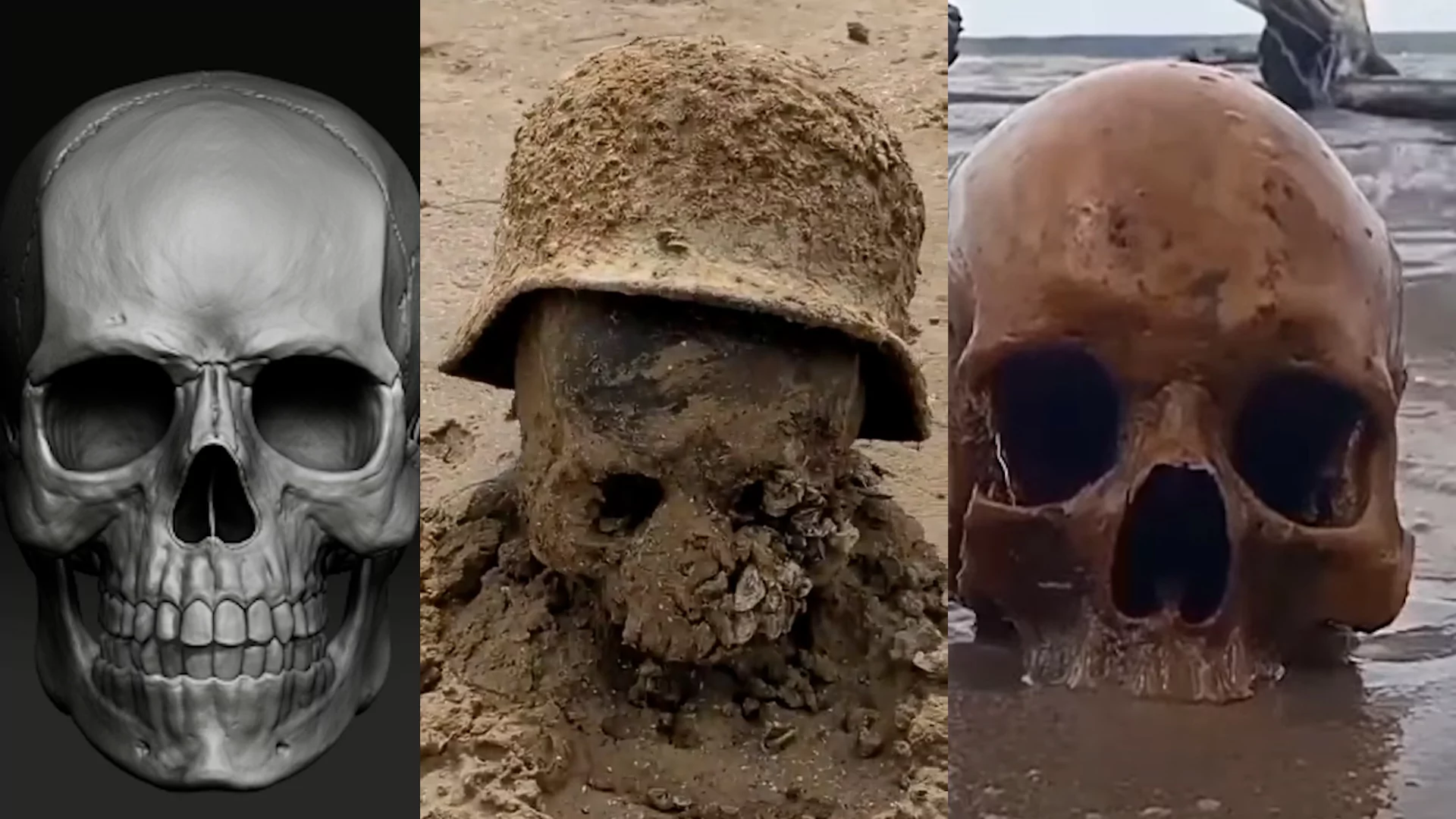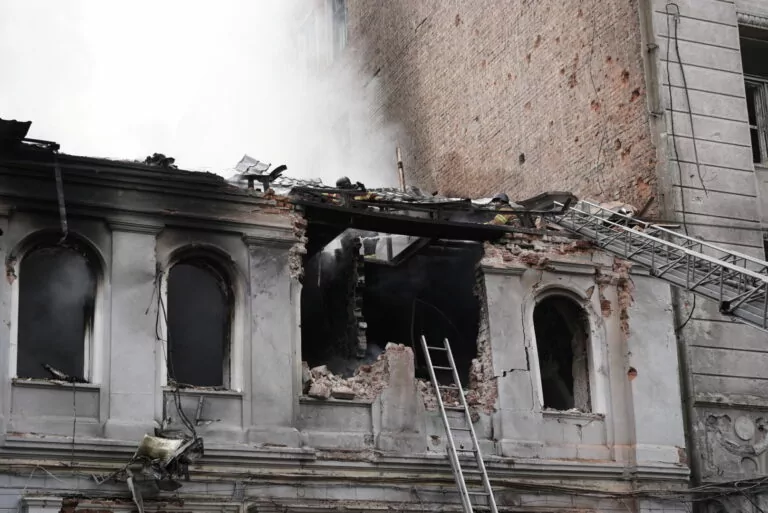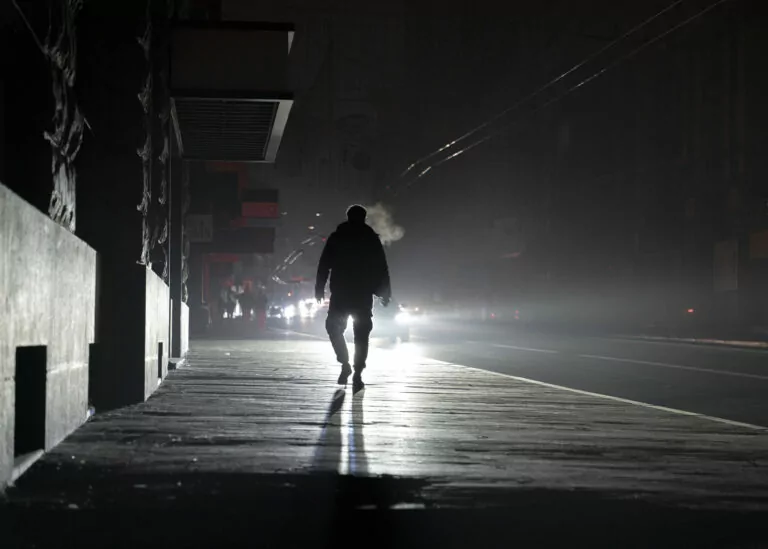The Kakhovka dam explosion caused one of the most significant disasters in Ukrainian history. Thanks to the Perevirka bot, we could observe how Russian propaganda went through different stages of reaction to the event: denial, anger, and acceptance. And finally, after objections to the hydroelectric power plant (HPP) mining (“it’s not us” and “it’s not profitable for us”) by their military, Russian propaganda resorted to standard narratives. Namely, to the spread of the message, “Ukraine is a country of chaos, radicals, and Nazis.”
One of the manifestations of this narrative became the story about the human skulls allegedly found on the reservoir’s shore. Gwara Media fact-checkers investigated this case.
What happened?
Videos about human remains allegedly found in places where the Kakhovka reservoir “retreated” are circulating online. Mostly, these are videos of poor quality: neither the location, date nor the authors of the filming are known. However, the video of a skull in a helmet received the most distribution and requests to the Perevirka bot.
“The flood of the Dnieper washed away the German military graves of the Great Patriotic War,” says the video caption.
The flood of the Dnieper washed away the German military graves of the Great Patriotic War pic.twitter.com/ldu3zEnKAW
— S p r i n t e r (@SprinterFamily) June 11, 2023
The video of user @Sprinter99880, fakes and manipulations from whose page we have repeatedly analyzed, has gained more than 1,6 million views. So, we decided to study it.
Analysis
Let’s start by analyzing the shape and color of the skull in the frame. It has a very similar color to the sand on which it is located.

Let’s compare it closer with another skull found in an ancient cemetery eroded by the Ob Reservoir.

Bone shape
The first thing we pay attention to is that the skull, allegedly found at the Kakhovka Reservoir, has very high cheekbones.
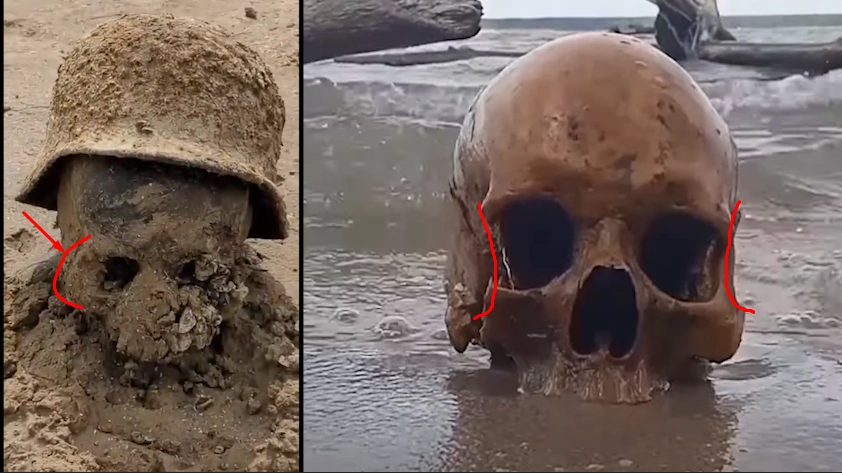

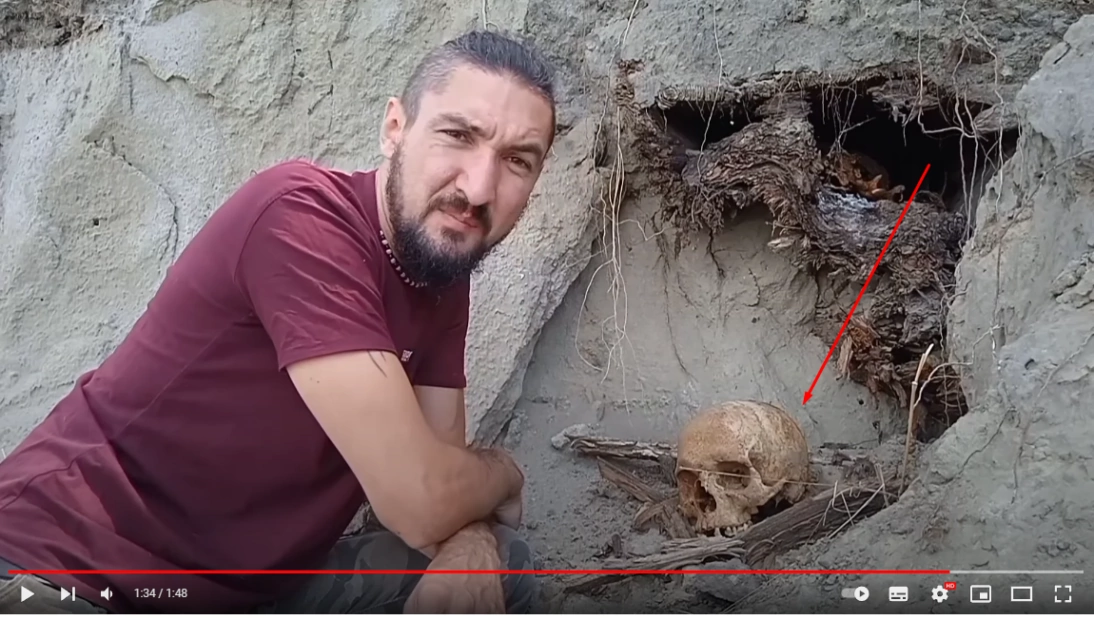
From the side, the “Kakhovka skull” does not have depressions characteristic of a human skull: such expressive cheeks differ from the anatomical structure of human bones. They are similar to stickers on top of an item.
From the perspective in the frame, it can be seen: due to the lack of holes, the lower jaw does not even have anything to “be attached to.”
Nose and teeth
Surprisingly, the “Kakhovka skull” has a nose. Of course, it can be a growth, but we should pay attention to its smooth, seeming-like cleaned structure on one side and covered with shells on the other. Once again, we notice the identity of the color of bones and sand.
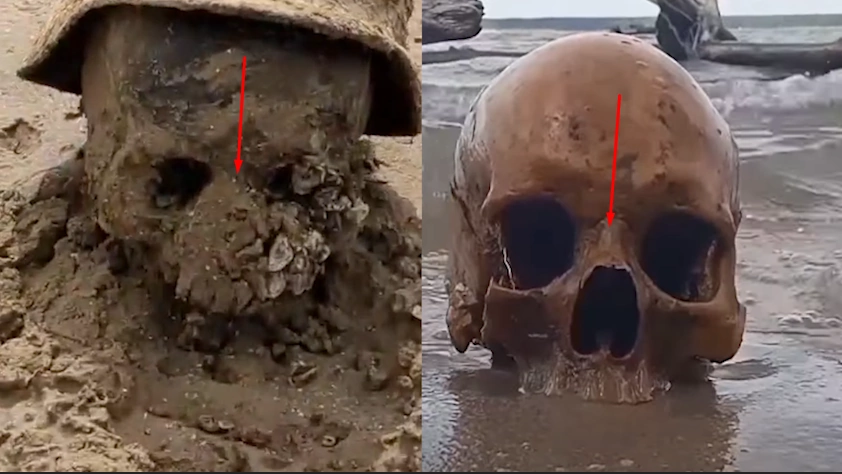
Next, let’s take a closer look at the teeth. We watched many videos where skulls were found in similar conditions. And if the teeth remained, as we can see in the screenshot below, they do not change color – they are immediately visible on the jaw.
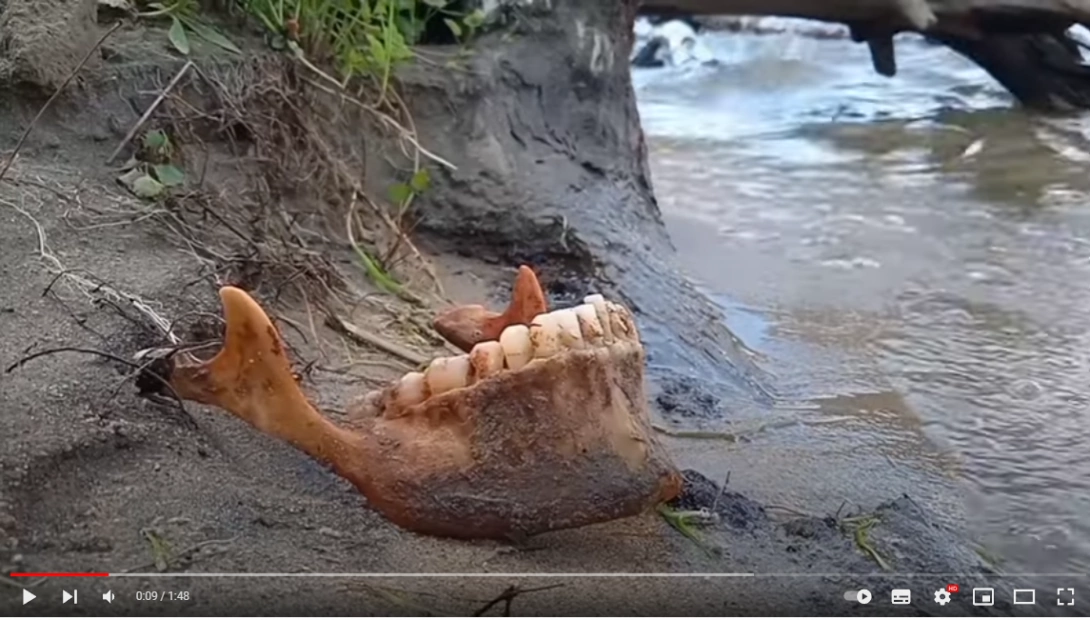
We compared the “Kakhovka find” with a skull that had been lying in the water since 1941. Here it is visible: the teeth remaining on the side have not changed color, and the jaw does not protrude beyond the nostril.

On the “Kakhovka” skull, we can see the upper jaw, which has moved forward a lot – so much that it was at the level of the tip of the nose.

Eye sockets
Let’s omit the shape of the eyes because it is hard to study due to a large amount of sand. Changing the exposure settings, we highlighted the “Kakhovka find” and the skull found at the Ob Reservoir.
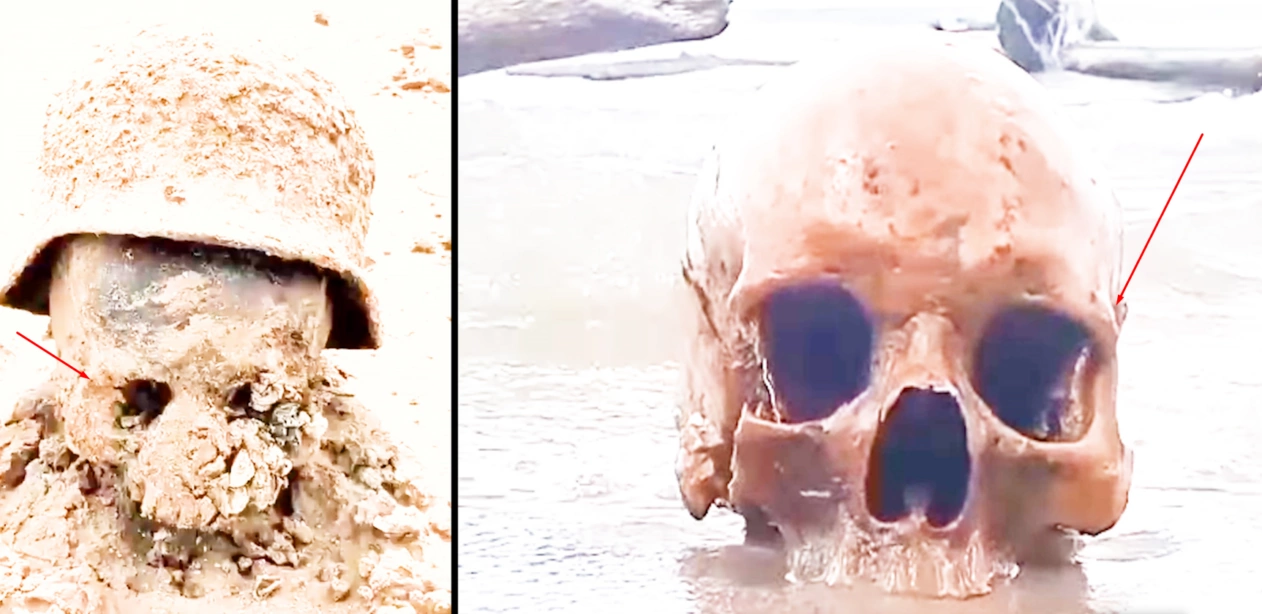
As you can see, there is no void inside the “Kakhovka skull.” Under illumination, a large amount of sand can be seen inside, and the eye socket itself is shallow. On the other hand, the skull from the Ob Reservoir has voids characteristic of a human skull.
Historical background and footprints in the sand
We should pay particular attention to the traces of the author of the installation at the place where the skull is located.
Indirect signs of a fake are the absence of location indication and the anonymity of the video’s author. Almost everywhere, the video is attributed as a clip from social networks or “from eyewitnesses.”
Moreover, the helmet is not attached to the skull in any way. Suppose you consider the video’s description and imagine we see the flooded burials from the Second World War; the old growths of mollusks become incomprehensible. After all, to create such a cluster of mollusks, it is not enough to wash away the grave – the skull must have been in the water for years.
Meanwhile, the Kakhovka HPP construction began on Sept. 20, 1950, lasting five years until Oct. 18, 1955. That is, already after the end of the war. So the participants of the Second World War had to be already buried.
According to historical data, Germans were not buried in helmets. In the occupied territories of the Soviet Union, they often arranged graves for their dead just in populated areas, placing crosses with helmets over them. It was not widespread, but we did not find evidence of cases of deliberate burial of Germans in helmets.
Ukrainian local historian Eduard Mondzelevskyi says that in Fastiv [city in Kyiv Oblast], German graves originally were without helmets, just with plaques. Only later, helmets began to be hung on them (one of which, the most important one, had to be larger). Fastiv old-timers eyewitnesses remembered it as “a sea of wooden crosses with helmets in the very center.”


However, after the liberation of the lands by the Red Army, these cemeteries were liquidated following the resolution of the State Defense Committee No. 1517 dated April 1, 1942.
Conclusions
Why are such fake videos created and distributed?
First, to divert attention. By discussing and sharing such videos, people lose focus and are distracted from the scale of the tragedy.
Second, to provoke mythological thinking: under almost every video, some people write, “This is a sign! One CANNOT be at war with Russia!” etc.

Obviously, the situation with flooding ancient cemeteries is very likely. However, when a video appears almost simultaneously in many groups and online communities and has such distribution, it may indicate that someone is helping with the promotion.
After all, when ancient cemeteries are swept away in Russia, the information usually has a narrow circle of consumers, considering the Russian Federation’s population. So, for example, the video of the flooded old cemetery at the Bratsk Reservoir has 147,000 views. And the video with a flooded Siberian graveyard from 2022 gained a modest 11,000 views.
Read more: Fake. Ukrainian Police Cars Patrol Warsaw Streets
It may be challenging to understand whether the information is trustworthy. That is why we created the Perevirka bot. Send any news in Ukrainian or English, and within 24 hours, you will find out whether you can trust the chosen publication.
by Yuliana Topolnyk,
translated by Tetiana Fram
Follow us on Twitter, Instagram and LinkedIn for more news, stories, and field reports by Kharkiv journalists.
